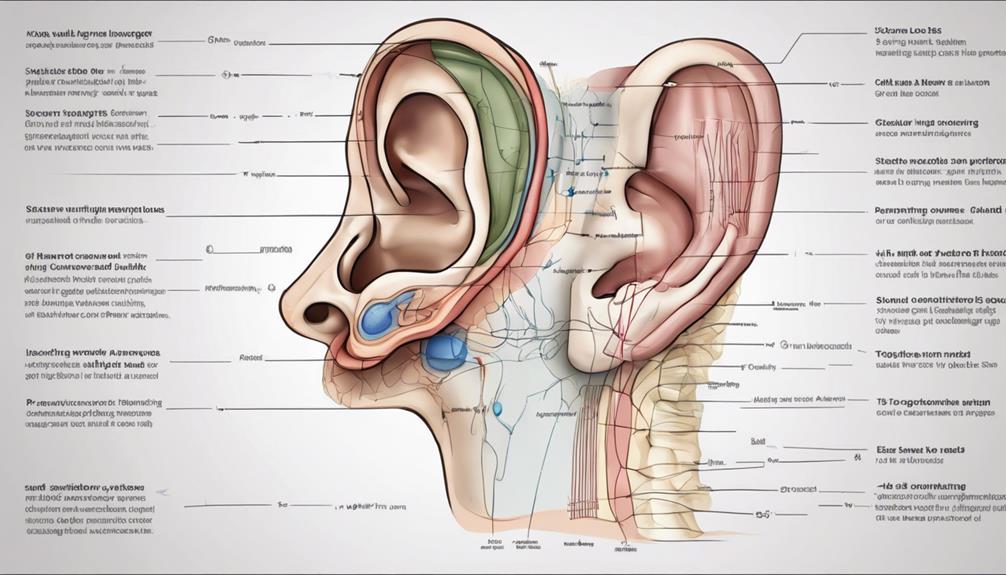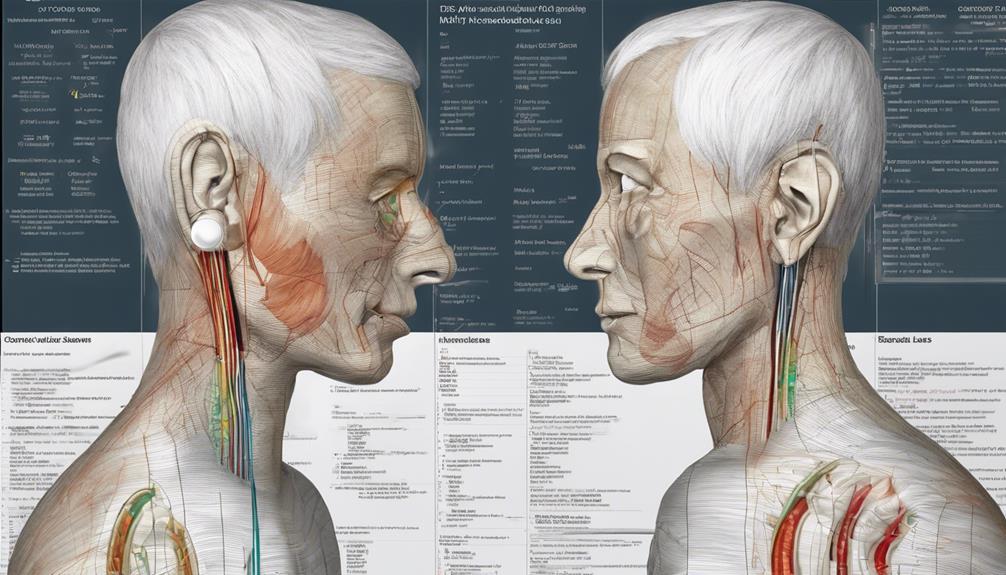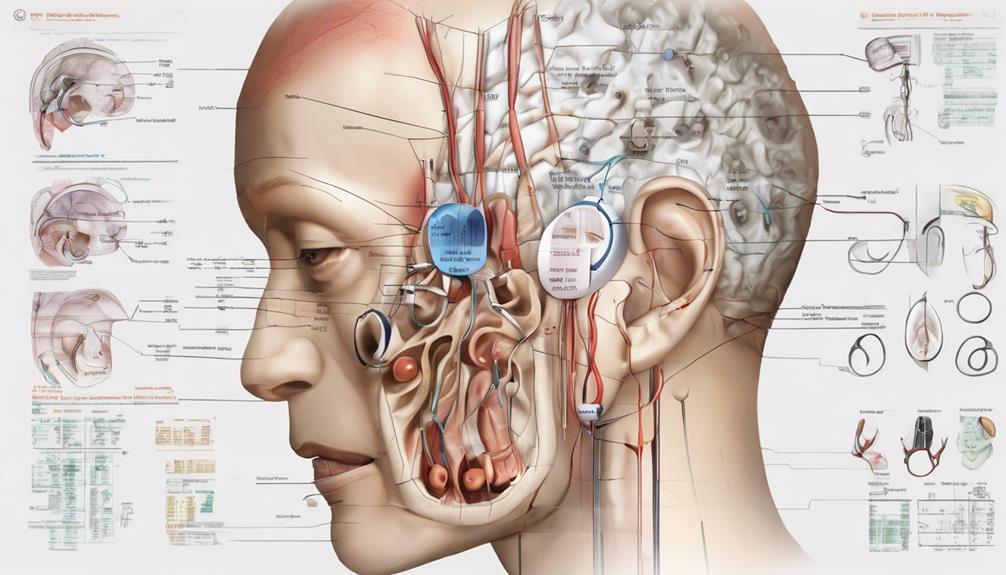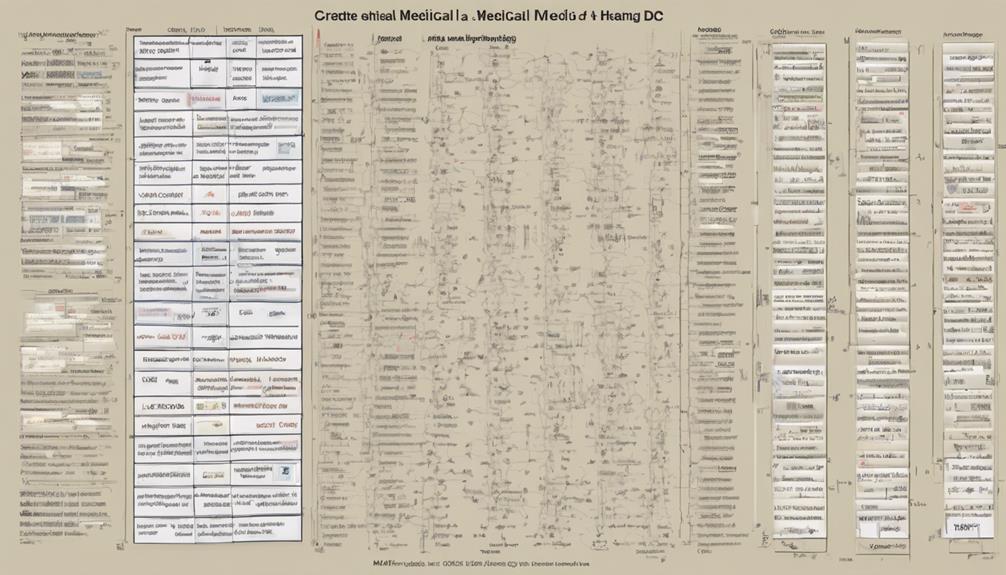Facing the difficulty of determining the accurate ICD code for hearing loss may seem daunting, considering the intricate nuances and classifications linked to it.
However, understanding the different types of hearing loss and the factors that influence code selection can streamline the process.
By delving into the intricacies of ICD-10-CM coding basics, one can navigate through the documentation tips for accuracy and reimbursement considerations to ensure precise coding for each unique case.
Key Takeaways
- Specify type and laterality for accurate ICD-10 coding.
- Include documented risk factors and diagnostic test results.
- Distinguish between sensorineural, conductive, and mixed types.
- Update coding knowledge for proper reimbursement and tracking.
ICD-10-CM Coding Basics
How do we navigate the complexities of ICD-10-CM coding for hearing loss to ensure accurate documentation and coding?
When dealing with sensorineural hearing loss, it's crucial to select the appropriate ICD-10-CM codes to reflect the nature of the impairment accurately. Codes such as H90.3 for sensorineural hearing loss in unspecified ear or H90.41 for sensorineural hearing loss in right ear provide specificity in coding.
Similarly, in cases of conductive hearing loss, codes like H90.6 for conductive hearing loss in unspecified ear or H90.71 for conductive hearing loss in right ear are essential for precise coding.
Understanding the distinctions between sensorineural and conductive hearing loss is fundamental to select the correct ICD-10-CM codes. When facing cases with unspecified ear involvement, utilizing codes that cover bilateral or unilateral conditions becomes necessary for comprehensive documentation.
Properly distinguishing between these types of hearing loss ensures accurate reporting and appropriate treatment pathways for patients.
Types of Hearing Loss

Classifying hearing loss is essential in understanding its underlying causes and determining appropriate treatment modalities.
When it comes to categorizing hearing loss, there are three main types to consider:
- Conductive: This type of hearing loss occurs due to issues in the outer or middle ear that obstruct the conduction of sound waves. Common causes include ear infections, earwax buildup, or problems with the ear canal or eardrum.
- Sensorineural: Sensorineural hearing loss is caused by damage to the inner ear or the auditory nerve. Aging, exposure to loud noises, and certain medical conditions can contribute to this type of hearing loss.
- Mixed Conductive and Sensorineural: Mixed hearing loss involves a combination of both conductive and sensorineural components. This means there are problems in both the outer or middle ear and the inner ear or auditory nerve.
Properly identifying the type of hearing loss is crucial for selecting the most effective treatment options and assigning the correct ICD-10-CM code.
Factors Influencing Code Selection

Factors influencing the selection of the appropriate ICD-10 code for hearing loss encompass various considerations related to the type, laterality, specificity of documentation, underlying causes, and differentiation between 'other' and 'unspecified' codes.
The type of hearing loss, whether conductive, sensorineural, or mixed, plays a significant role in determining the correct ICD-10 code. Additionally, the laterality of the hearing loss, whether it's bilateral or unilateral, is crucial for accurate coding.
It's essential to have specific codes that accurately reflect the diagnosis and provide detailed documentation to support code selection. Understanding the underlying causes or contributing medical conditions is vital for assigning the correct ICD-10 code.
Moreover, differentiating between 'other' and 'unspecified' codes, such as in cases of unspecified hearing loss, is necessary for precise coding in the ICD-10-CM H section. By carefully considering these factors, healthcare professionals can ensure accurate and detailed documentation, leading to the correct assignment of ICD-10 codes for hearing loss.
Documentation Tips for Accuracy

To ensure accurate coding for hearing loss, detailed documentation of the type of hearing loss, underlying causes, laterality, diagnostic test results, and severity is essential. When documenting hearing loss for ICD coding and billing purposes, consider the following tips:
- Specify the type of hearing loss (conductive, sensorineural, mixed) to determine the appropriate ICD code.
- Include documented risk factors such as aging, loud noise exposure, infections, genetics, or trauma that may have contributed to the hearing loss.
- Clearly indicate whether the hearing loss is unilateral or bilateral to ensure accurate code selection.
Accurate documentation is crucial for proper coding and billing related to hearing loss. Be sure to provide specific details on the type, causes, laterality, and severity of the hearing loss, supported by diagnostic test results. By following these documentation tips, healthcare providers can facilitate accurate coding and improve the quality of care provided to patients with hearing impairments.
Reimbursement Considerations

Reimbursement considerations in the context of hearing loss treatments heavily rely on accurate ICD-10 diagnosis coding to secure proper insurance reimbursements and prevent claim denials. Ensuring the correct ICD-10-CM codes for hearing loss is paramount for healthcare providers seeking reimbursement for their services.
Specificity in coding, such as identifying the type (bilateral, unilateral, or unspecified) and laterality of hearing loss, is crucial in accurately reflecting the patient's condition. By adhering to coding guidelines and thorough documentation practices, providers can support their reimbursement claims effectively.
Proper coding not only facilitates insurance reimbursements but also aids in tracking the patient's progress and treatment outcomes. It's essential to stay updated on coding changes and requirements to maintain compliance and maximize reimbursements for hearing loss services.
Frequently Asked Questions
What Is the ICD Code for Hearing Loss?
We address the ICD code for hearing loss, crucial for accurate billing and treatment. Specific codes like H91.90 for unspecified cases and others for conductive or sensorineural types exist. Providers need to select the correct code based on the patient's condition.
Understanding nuances like H90.0 for bilateral conductive and H90.3 for sensorineural is key. Accurate coding enhances communication among healthcare professionals, insurers, and billing departments, ensuring efficient care delivery.
What Is the ICD-10 Code for Hearing Loss in 2023?
We've got the answer you're looking for!
In 2023, the ICD-10 code for hearing loss remains crucial for accurate medical documentation. Remember, bilateral conductive loss is H90.0, while unilateral is H90.1. Unspecified conductive issues are coded as H90.2.
On the sensorineural side, bilateral cases are H90.3, and unilateral cases are H90.4.
Stay informed to ensure proper coding and comprehensive patient care.
What Is the ICD-10 Code for Perceived Hearing Loss?
We can identify the ICD-10 code for perceived hearing loss as H93.9. This code falls within the category of 'Other disorders of the ear.'
Perceived hearing loss refers to a subjective complaint where individuals feel a decrease in their ability to hear. Differentiating between perceived and clinically measured hearing loss is crucial for accurate diagnosis and treatment.
Healthcare providers rely on patient reports and diagnostic tests to determine the cause, enabling effective management and tracking of patient outcomes.
What Is the ICD-10 Code for Bilateral Unspecified Hearing Loss?
Sure, the ICD-10 code for bilateral unspecified hearing loss is H91.90.
It's crucial to specify bilateral hearing loss accurately to reflect the patient's condition. This code is used when the type of hearing loss and the ear are unspecified. Proper coding ensures accurate billing and treatment planning, excluding specific types like noise-induced or psychogenic deafness.
It plays a key role in healthcare documentation and patient care.
Conclusion
In conclusion, determining the ICD code for hearing loss requires attention to detail and consideration of various factors. By understanding the types of hearing loss, documenting accurately, and considering reimbursement implications, healthcare professionals can ensure proper coding.
Remember, 'the devil is in the details' when it comes to accurately coding hearing loss conditions for optimal patient care and billing purposes.











